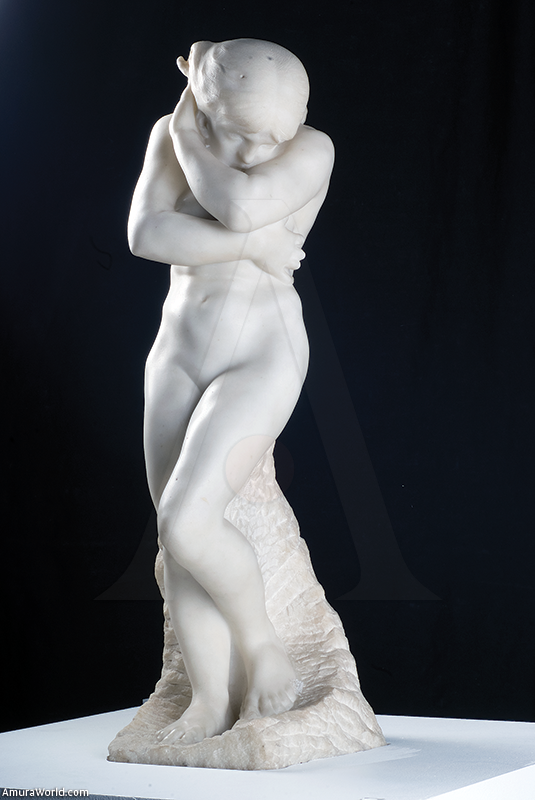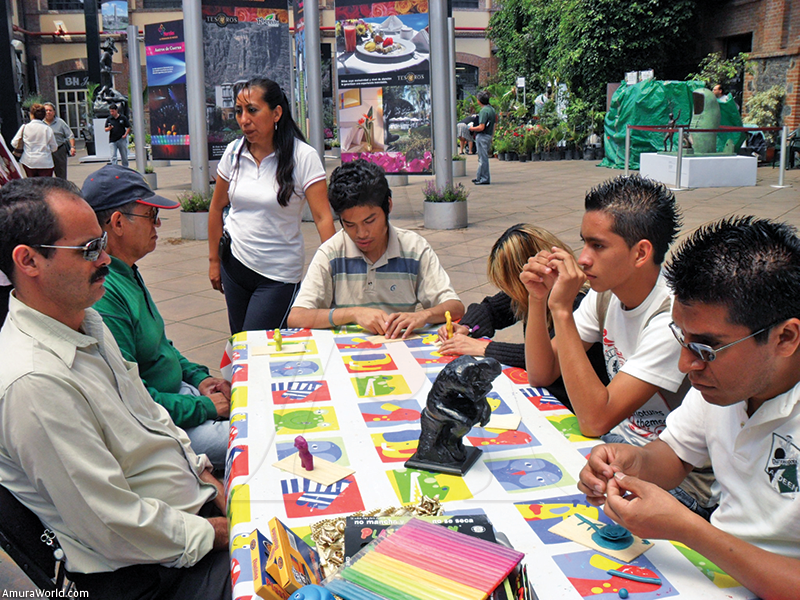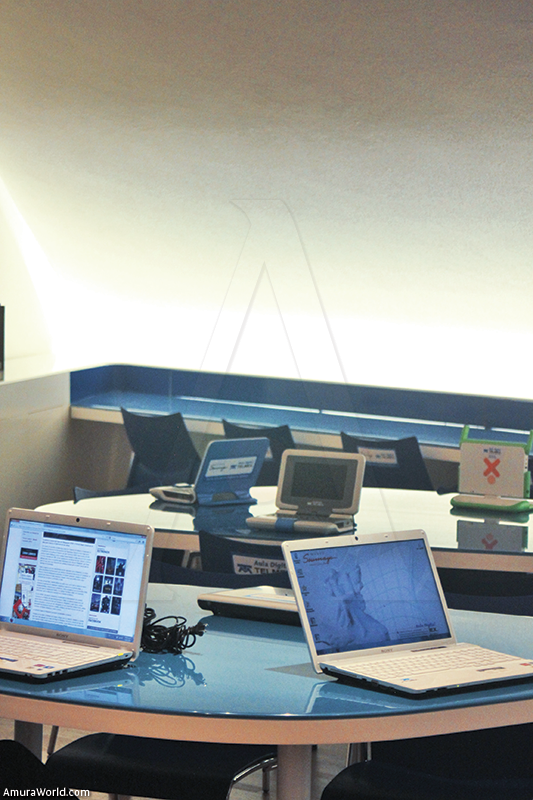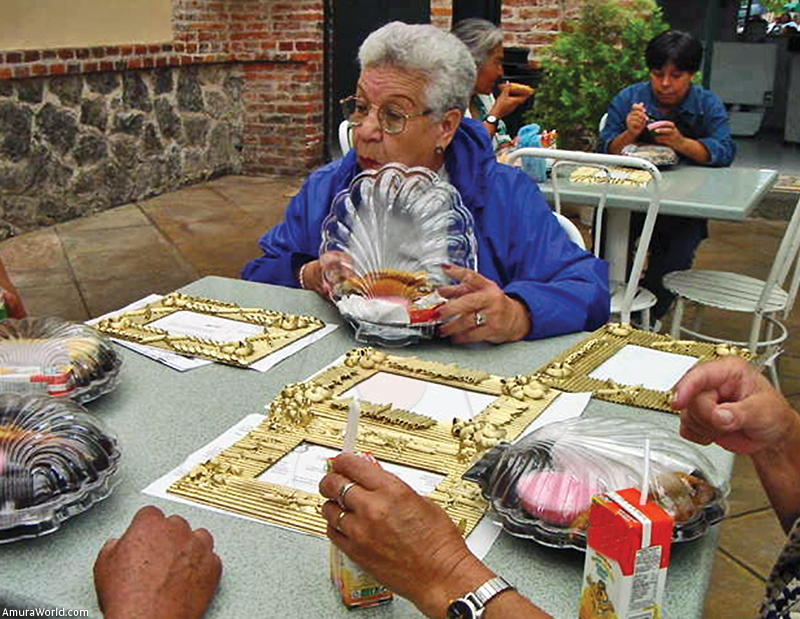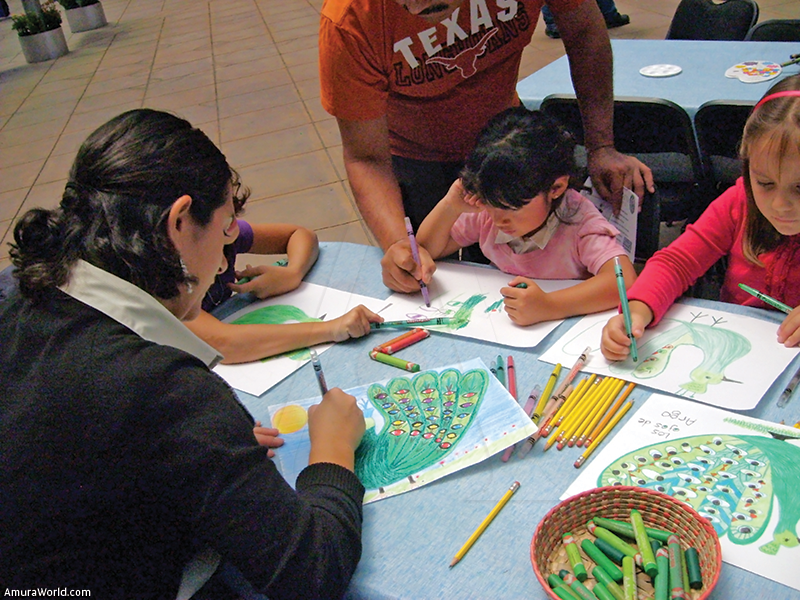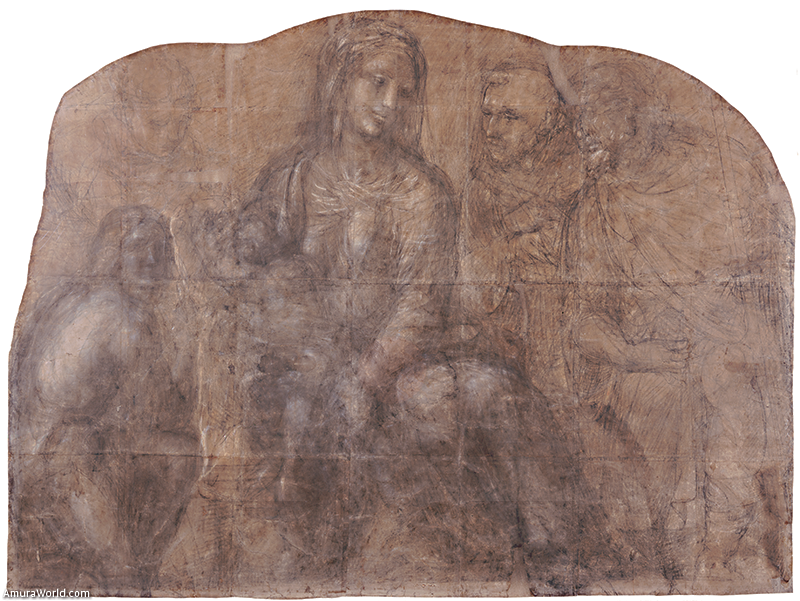The creative act is not just performed by the artist:
the spectator puts the work in contact with the outside world by deciphering and pervading their intrinsic qualities, and this is how it contributes to the creative act.
Marcel Duchamp (1887-1968), French artist, 1957
Grupo Carso has looked for the comprehensive development of the human being key areas: health, education, culture, sports, justice, human and economic development, environment and conservation. In over 16 years, Soumaya Museum of Carlos Slim Foundation has embraced these ideals through art.
Collective learning. This ruling opens multiple readings to collections, the museum and visitors. The postmodern cultural spaces are facing new challenges; forums, debates, exchange of ideas that set the work in dialogue, while we are reflecting on processes of recognition, identity and, more than tolerance, of respect.
Soumaya has incited its audiences to achieve meaningful experiences, to sensitize in order to tighten a richer appreciation through the use of all senses and as a result, to create a connection with the art work, where the pleasure or aesthetic enjoyment allows an intense personal experience. However, visitors are not alone. There is a collective embrace, unique but not univocal, where the work is open to reading possibilities and approach.
There’s no such thing as a general public. Each individual has a symbolic meaning and does not enter the museum as a blank form, waiting to be filled by concepts, colors and shapes. Experience is the basis for understanding the work and for encouraging visitors intellectually and socially in a concert where all voices are heard. Cultural baggage that sums in collective logs, where the museum propitiates imagination to play a role in the personal interpretation of art, by promoting creative responses by the public, through the dialogue and appropriation of each painting, sculpture, photography, coin, bill, dress, furniture, object ... Letting the ideas flow through space. Hence, it is necessary to provide specialized care and recreational and academic learning activities, adapted to each kind of person, always identifying their age and physical, intellectual and emotional abilities.
Social Action, Commitment, Results; Programs undertaken by the foundation strengthen its relationship with the community.
Soaring
From the title of a Rodin’s sculpture, in the Gate of Hell, this program promotes integration activities for people with and without apparent disability. It promotes universal access projects where are added up in an ongoing dialogue with art, people blind and visually impaired, deaf and weak of hearing, people with Down Syndrome, with autism and severe autism and Alzheimer, schizophrenia, and terminal patients. It carries out research and its implementation, while it expresses and communicates ideas.
Touching sculptures and capturing them with all senses. The signs that embrace the full meaning of a piece and its creator. Intellectual disability that explores creative processes. Colors and sounds that break down borders. Memory rescued from the museum.
A morning or an afternoon at the museum
Undoubtedly, our Mexican children are the basis that builds the national reality and its bet to the future. In Soumaya, public schools of basic education (preschool, primary and secondary) of the Ministry of Education are greeted.
“Education alone can never produce art”, said the architect Walter Gropius. Nevertheless, since the museum started giving comprehensive training contributing to the development of skills and competencies in children, such as: Respect, Self-esteem, Universal civic values and Rights of children; It has developed a greater capacity of analysis through close observation of the art works. All in order to promote a critical attitude towards the environment, based on dialogue and discussion rooms, while also enhancing their creativity
In the same way, it seeks to get focus on the educator. Teachers who see the museum as a support for their training and professional development in the use of art as a mean of knowledge, leaving the classroom and explore new spaces like the museum’s auditoriums. Equipped whit state of the art technology and whit a capacity of 310 seats, plus space for wheelchairs, the Plaza CARSO auditorium becomes a place for encounter and debate.
Children’s hideout
The museum is a refuge and a support for children in street situation, attention to temporary shelters, group homes and social welfare institutions of Mexico City. At Soumaya the education of children, youth, single mothers and abused people is supported, so that the tours and workshops will boost the appreciation and if possible the process of creating art as a mean to express ideas and to improve the quality of life and their incorporation into society.
The Bronze Age
Again the most important Rodin’s collection outside of France, baptizes a program of free care and specialized groups and institutions for the elderly. The museum gives amenities and cultural development alternatives to the elderly population, allowing their intellectual and physical activity, as well as strengthening their self-esteem. It also provides opportunities for expression and development, while society knows and defends their rights.
Familiarize yourself with Soumaya Museum
The family as a social group is embraced on the weekend programs that include communication and teamwork through workshops and activities that are constantly changing to strengthen social and ethical values. Throughout spaces allow to have activities that throught body language, crafts or play, we focus on reflection and interpretation of works in which families of all kinds build a new dialogue through art.
Ecology through green CARSO
Actions not waste. Soumaya sums efforts to programs that promote environmental education and sustainable development. Environment and conservation are tied with workshops that seek to raise awareness among participants about how our habits and attitudes have an impact, either positive or negative, on the environment.
Encouraging a reflection and implementation of ideas aimed at prevent and preserve biodiversity and raising awareness about the problem of solid waste. Creating culture inside the institution and in the community by integrating a policy of saving paper. Avoiding indiscriminate printing of outreach materials by using electronic media and Internet, implementing a waste segregation program in the offices, facilities and public open spaces of Soumaya Museum, and also, by making an organic waste for CARSO Square green areas. Side by side, artistic creations and environment seek to raise public awareness of our mark on the environment.
Soumaya Museum: a space to share and enjoy
Observe. Describe. Interpret. Appropriate. Mediate. Criticize. These are concepts in which art is renewed in a personal and subjective relationship. Rooms of the museum where the art works make sense through the gaze of its visitors. Carlos Slim’s Foundation is committed to dialogue on these routes that are capable to awake imagination, through pre and post visit activities. Additional activities planned together with teachers and courses for them, as well as free programs offering everything from transportation to the discovery of more than thirty centuries of artistic expression. For vulnerable groups a snack is offered. Admission is free for all ages, seven days a week.
Recognize ourselves in the otherness. Acknowledge ourselves as minorities in a social and cultural mosaic. Celebrate diversity. Learning construction through experience recalls the words Auguste Rodin bequeathed in his will:
“Everything is beautiful for the artist, because in every being and in each thing, his penetrating gaze reveals the character; this means, the inner truth that shows itself through under the form. Do not hesitate to express your feelings [...]. The great point is to be moved, to love, wait, tremble, and live. [...] Art is indeed a magnificent lesson of honesty.”
Text: Alfonso Miranda M., Director General Museo Soumaya.Fundación Carlos Slim ± Photo: Colección Museo Soumaya.Fundación Carlos Slim, AMURA-León Felipe

